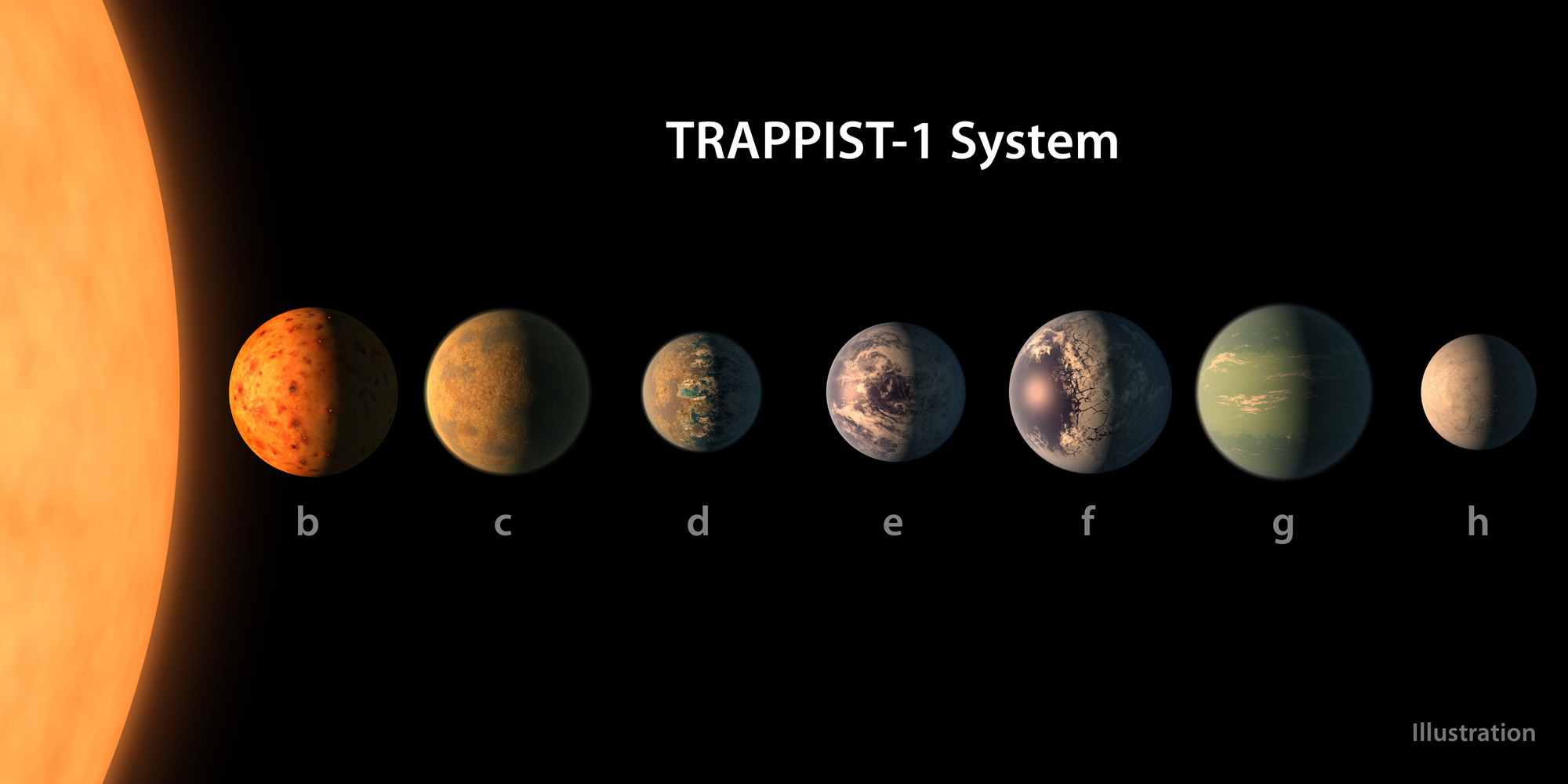 |
| http://www.space.com |
AscensionWithEarth.Com
February 23, 2017
Below is a mix of articles relating to the "Big" discovery that NASA just made available to the public. Yes, it is just another lie as many know that life is so abundant in this Universe, yet the 'Powers That Be' continue to mind control the global community as they fear for their lives if everything becomes 'Full Disclosure'. Main Stream Media and Governments continue their mass mind control over humanity, but in my opinion people are becoming more aware of the deception being played on them.
I have accumulated a bunch of articles related to NASA's "BIG" announcement yesterday. They love to throw bread crumbs at our feet, that of which "bread crumbs" are equal to "Soft Disclosure". Many people get excited about these "crumbs", which is understandable because for thousands of years we have been lied to and mind controlled. Reality is that LIFE is everywhere in this Universe, a common thing that should have no surprise factor.
Here are your bread crumbs.........
Discovery of 7 Earth-Size Exoplanets a 'Giant Leap' Forward in Alien-Life Hunt
http://www.space.com/35803-trappist-1-planets-alien-life.html
The discovery of seven Earth-size worlds circling a nearby star could be a watershed moment in humanity's quest to find alien life, scientists say.
Earth-Size Worlds Found Orbiting Star; Could Hold Life
http://feedproxy.google.com/~
CAPE CANAVERAL, Fla. (AP) -- For the first time, astronomers have discovered seven Earth-size planets orbiting a single nearby star - and these new worlds could hold life.
NASA Enters Phase 1 Of Authorised Disclosure...
https://www.simonparkes.org/
When I did my latest Kerry Cassidy interview I said that disclosure was on the cards. Today NASA has entered phase 1 of their authorised disclosure plans - a big article on habitable planetswww.nasa.gov/press-
Seven Earth-like planets discovered around single star
http://www.spacedaily.com/
Paris (AFP) Feb 22, 2017 Researchers announced Wednesday the stunning discovery of seven Earth-like planets orbiting a small star in our galaxy, opening up the most promising hunting ground so far for life beyond the Solar System. All seven roughly match the size and mass of our own planet and are almost certainly rocky, and three are perfectly perched to harbour life-nurturing oceans of water, they reported in the
Exoplanet Tour: Meet the 7 Earth-Size Planets of TRAPPIST-1
http://www.space.com/35805-
Come along for a tour of the remarkable TRAPPIST-1 system, which harbors seven planets about the same size of Earth.
Seven Terrestrial Exoplanets Around a Nearby Star
http://www.spacedaily.com/
Bern, Switzerland (SPX) Feb 22, 2017 TRAPPIST-1 is the name of the small, ultracool star that is the new hot topic in astronomy and the search for life outside our solar system. Observing the star with telescopes from the ground and space during an extensive campaign, an international team found that there are at least seven terrestrial planets around TRAPPIST-1. Their temperatures are low enough to make possible liquid water on th
TRAPPIST-1 is ‘Most Incredible Star System to Date’ - 5 Amazing Facts | Video
http://www.space.com/35786-
About 39 light-years away, seven Earth-sized planets orbit an ultra cool dwarf star and the European Space Agency is call it the “the most incredible star system (find) to date.”
NASA Telescope Reveals Largest Batch of Earth-Size, Habitable-Zone Planets Around Single Star
http://hubblesite.org/news_
NASA's Spitzer Space Telescope has revealed the first known system of seven Earth-size planets around a single star. Three of these planets are located in an area called the habitable zone, where liquid water is most likely to thrive on a rocky planet. The system sets a new record for the greatest number of habitable zone planets found outside our solar system. Any of these seven planets could have liquid water, the key to life as we know it. The exoplanet system is called TRAPPIST-1 and is only 40 light-years away. Following up on the Spitzer discovery, NASA's Hubble Space Telescope has initiated the screening of four of the planets, including the three inside the habitable zone. These observations aim at assessing the presence of puffy, hydrogen-dominated atmospheres, typical for gaseous worlds like Neptune, around these planets. In May 2016, the Hubble team observed the two innermost planets and found no evidence for such puffy atmospheres. This finding strengthened the case that the planets closest to the star are terrestrial in nature. Astronomers plan follow-up studies using NASA's upcoming James Webb Space Telescope, scheduled to launch in 2018. With much greater sensitivity, Webb will be able to detect the chemical fingerprints of water, methane, oxygen, ozone, and other components of a planet's atmosphere. Webb also will analyze planets' temperatures and surface pressures — key factors in assessing their habitability. For illustrations and more information about the TRAPPIST-1 system, visit: http://exoplanets.nasa.gov
NASA Announced Today Seven Planets Similar to Earth Orbiting the Trappist-1 Dwarf Star 40 Light-Years from Us.
https://www.earthfiles.com/
"This is the first time that so many planets of this kind (rocky) are found around the same star" in our Milky Way neighborhood. - Michael Gillon, Ph.D., Astronomer, Univ. of Liege, Belgium "I think we've made a crucial step towards finding if there is life out there. ... Here, if life managed to thrive and release gases similar to what we have on Earth, we will know." - Amaury Triaud, Ph.D., Astronomer, Univ. of Cambridge, U. K. See https://www.earthfiles.com for image illustration and more information.